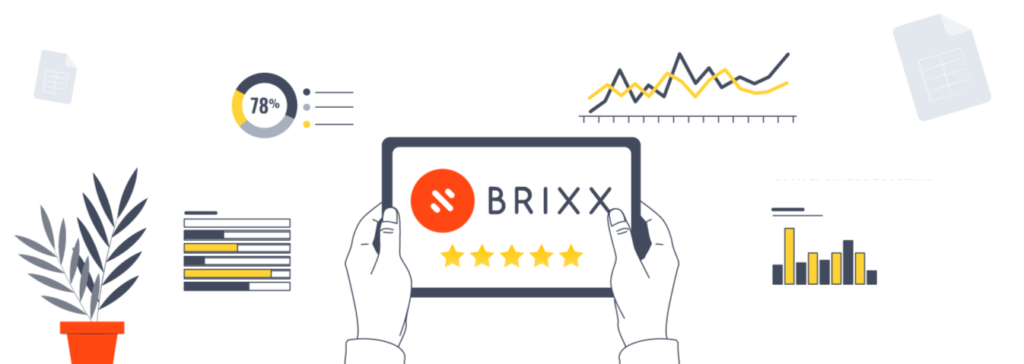

What is a cash flow forecast?
A cash flow forecast is a financial tool used by businesses to estimate the future cash inflows and outflows over a specific period, typically monthly or quarterly. It helps in predicting the amount and timing of cash that will be received and paid out, allowing businesses to effectively plan and manage their finances.
Creating a cash flow forecast is generally entrusted to the finance team of a business. However, in larger businesses, an accurate forecast requires data collection from multiple sources, both inflow and outflow. If you’re trying to learn more, this article should help you to understand the processes involved.
Get started with our forecasting software so that you can plan your business' future
Perform cash flow forecasts in Brixx
Why use a cash flow forecast?
Businesses use cash flow forecasts to plan how much cash they’ll need in the future. By exploring different “what-if” scenarios, they can see how changes to their financial plan affect future results. This helps them make smarter, more strategic decisions.
On the flip side, you can use a cash flow forecast to look ahead to tough financial periods and explore different options. This can be critical, as if your business runs out of cash, it may not survive. The good news is, a strong cash flow forecast can help you avoid that.
Overall, a cash flow forecast is a powerful tool that enhances financial planning. It provides businesses with greater control over their finances and helps them navigate through various financial challenges more effectively.
How to forecast cash flow?
Forecasting cash flow involves several steps. Here’s a general outline of the process:
- Gather data: Collect relevant financial information, including historical cash flow statements and other financial documents. This data serves as the foundation for building an accurate forecast.
- Determine forecast period: Decide on the time period for which you want to create the cash flow forecast. It can be monthly, quarterly, or any other suitable duration based on your business needs. A 13-week forecast is often desirable.
- Estimate cash inflows: Identify and project the various sources of cash inflows. This typically includes revenue from sales and any other incoming cash. Consider factors such as customer payment terms and potential changes in revenue streams.
- Estimate cash outflows: Determine and forecast the expected cash outflows. This involves analysing historical data and considering other anticipated expenses.
- Consider timing: Determine when cash inflows and outflows are expected to occur. Take into account any specific timing factors relevant to your business, such as seasonality. This will help you identify potential periods of cash surplus or shortage.
- Make assumptions: In forecasting cash flow, certain assumptions must be made since the future is inherently uncertain. These assumptions may include factors like market conditions or customer behaviours, alongside any other variables that can impact cash flow.
- Analyse and refine: Review the forecasted cash flow statement and analyse the projected cash position. Identify any areas of concern, any potential risks, and any opportunities. Adjust and refine your assumptions based on new information, or changes in your business circumstances.
- Monitor and update: Regularly track your actual cash flow against the forecasted figures. Update your cash flow forecast as new data becomes available and compare it with the actual performance. This allows you to assess the accuracy of your forecast and make adjustments if needed.
It’s important to note that creating a cash flow forecast involves a level of uncertainty, and actual cash flow may deviate from the forecast due to unforeseen circumstances. However, by following these steps and continuously monitoring your cash flow, you can improve the accuracy of your forecasts and make better-informed financial decisions.

Why are cash flow forecasts important?
Utilising cash flow forecasts is imperative to the success of your business. Here are some key reasons.
1. Improved financial planning
Cash flow forecasts provide a clear picture of the expected cash inflows and outflows, helping businesses to plan their finances effectively.
2. Understanding and managing liquidity
Forecasting helps businesses make sure they have enough cash to cover their expenses. It allows them to plan for cash shortages or surpluses and take appropriate actions to maintain liquidity.
3. Better management of working capital
By predicting when cash will come in and go out, businesses can manage their daily finances more smoothly. This helps avoid cash gaps and ensures there’s enough to cover essentials like wages and supplies.
4. Valuable decision making
Cash flow forecasts help you see if a project is financially realistic. They show how business decisions might affect your cash and highlight where you can save money or improve cash flow. With accurate forecasts, you can plan and make decisions more effectively.
5. Beneficial for investors
Cash flow forecasts are essential when seeking financing or making investment decisions. Lenders and investors often review cash flow projections to assess whether or not a business can repay loans or deliver returns.
6. Accurate risk management
Forecasts help to identify possible cash flow problems, such as late payments from customers. By anticipating these risks, businesses can take proactive measures to mitigate them and ensure financial stability.
7. Essential for stakeholder and investor communication
Cash flow forecasts are often required for reporting and communicating with investors and shareholders. Clear forecasts improve communication, build trust, and provide a comprehensive understanding of the business’ financial health.
The advantages of cash flow forecasting
Below, we’ve highlighted some key benefits of cash flow forecasting that you might not have considered when planning your cash flow.
Forecasts help to identify new opportunities
Cash flow forecasting can help identify potential opportunities for growth or improvement. By closely examining cash flow patterns, businesses can find ways to use their money more effectively.
Forecasts can give early warnings of financial difficulties
By regularly monitoring and updating the forecast, businesses can identify cash flow problems in advance. This early awareness allows them to take action before things get worse.
Forecasts can improve efficiency of business resources
By having a clear view of incoming and outgoing cash, businesses can allocate resources strategically. This leads to better cash utilisation and maximises the potential returns on investment.
Forecasts improve understanding of cash flow
Implementing cash flow forecasting helps employees better understand how cash moves through the business. This helps create a more financially conscious and responsible workforce, leading to improved overall financial management.
An example of cash flow forecasting
We have mentioned that there are different levels to a cash flow forecast. It can be monthly, quarterly, or annually. Here is an example of what a cash flow forecast looks like within the Brixx.

How can automation help with a cash flow forecast?
Financial planning as a small business can take a large amount of time and resources to complete. Utilising the classic method of forecasting within Excel or using spreadsheets can be enormously time consuming, and while they are beneficial for certain tasks, automating the process can save considerable amounts of time.
By using a financial forecasting tool, businesses can automate and improve their financial forecasting. Brixx allows you to do this with a host of smart forecasting features. Visit our pricing page today to see how this can help you.












